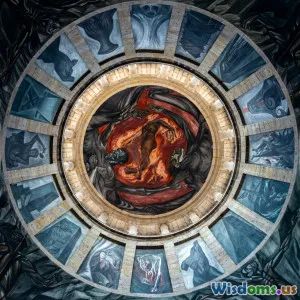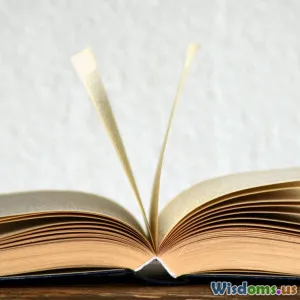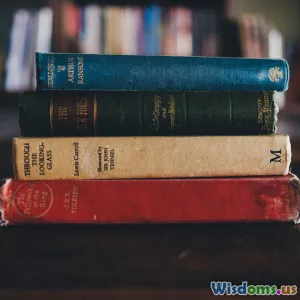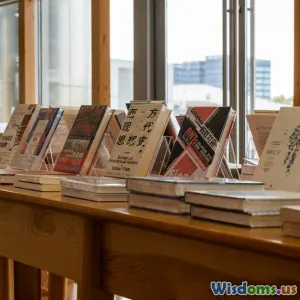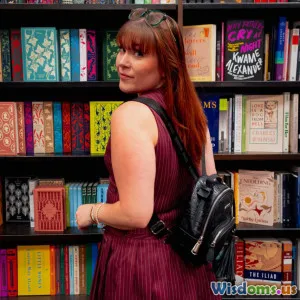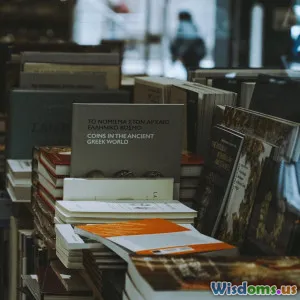
A Timeline of Literary Movements That Changed the Way We Write
8 min read Explore the profound literary movements that reshaped writing styles and storytelling across history. (0 Reviews)
A Timeline of Literary Movements That Changed the Way We Write
Introduction
Throughout history, literature has been humanity’s mirror, reflecting evolving societal values, philosophies, and artistic sensibilities. The way we write today owes much to the literary movements of the past—dynamic waves of innovation and rebellion that continuously reshaped language, style, and storytelling techniques. Understanding these movements is essential not only for literary enthusiasts but also for any writer or reader seeking deeper insight into how narratives influence culture.
This article charts a timeline of some of the most influential literary movements—from the impassioned verses of Romanticism to the fragmented narratives of Postmodernism—that profoundly altered the craft of writing. Each era we explore provides a lens into how cultural shifts molded literature and, in turn, how literature shaped those cultural shifts.
The Rise of Romanticism: Embracing Emotion and Nature (Late 18th to Mid-19th Century)
Emerging in the late 1700s as a reaction against the rationalism of the Enlightenment, Romanticism celebrated intense emotion, individualism, and the sublime beauty of nature. Writers like William Wordsworth and Samuel Taylor Coleridge pioneered this movement with works that prioritized feeling over reason.
Key Contributions:
- Elevating Emotion and Subjectivity: Romantics believed intuition and personal experience carried artistic truth. Wordsworth’s "Lines Composed a Few Miles Above Tintern Abbey" reflects this by blending personal memory with nature’s spiritual grandeur.
- Revolutionizing Poetic Form and Content: Romantic poets employed more lyrical and expressive language. Mary Shelley’s Frankenstein explored themes of the human psyche and societal alienation.
Impact on Writing:
Romanticism expanded subject matter beyond traditional topics to include madness, the supernatural, and the exotic. It introduced writers’ inner lives as legitimate material, inspiring introspection in later auteurs.
Realism and Naturalism: Portraying Life Unfiltered (Mid to Late 19th Century)
By the mid-1800s, Romantic idealism gave way to Realism, a movement committed to depicting everyday life accurately and objectively. Gustave Flaubert’s Madame Bovary is a classic example, scrutinizing the banal realities of provincial existence.
Key Features:
- Focus on Ordinary People: Realists rejected romanticized heroes for characters drawn from the working or middle class.
- Naturalism’s Scientific Outlook: Stemming from Realism, Naturalism, as championed by Émile Zola, emphasized determinism, where heredity and environment shaped fate.
Influence on Writing Style:
Straightforward prose replaced ornate Romantic language. Writers adopted detailed descriptions and intricate social contexts that lent authenticity to narratives, paving the way for later social commentary in literature.
Modernism: Breaking Conventions Amidst a Changing World (Early 20th Century)
World War I’s devastation and the rapid modernization of society birthed Modernism—a radical break from traditional structures and a quest to capture the fractured human experience. James Joyce’s Ulysses and Virginia Woolf’s Mrs Dalloway revolutionized narrative form, employing stream-of-consciousness and unreliable narrators.
Defining Traits:
- Experimentation with Form: Modernists abandoned linear plots in favor of fragmented timelines and multiple perspectives.
- Psychological Depth: Influenced by Freud, writers delved into subconscious thoughts to explore identity and alienation.
Real-World Impact:
Modernism’s complexity challenged readers, demanding active interpretation. This shift inspired diverse genres and remains a touchstone for contemporary narrative innovation.
The Harlem Renaissance: A Cultural and Literary Rebirth (1920s)
Emerging in Harlem, New York, this movement heralded African American artistic expression during a period of racial segregation. Figures like Langston Hughes and Zora Neale Hurston infused their writings with themes of racial pride, social critique, and folklore.
Literary Significance:
- Amplifying Marginalized Voices: It challenged stereotypes and asserted Black cultural identity.
- Blending Oral Traditions: The use of jazz rhythms and vernacular speech gave rise to a uniquely vibrant literary style.
Legacy:
The Harlem Renaissance laid groundwork for later civil rights literature and fueled the rise of multicultural narratives in American literature.
Postmodernism: Questioning Reality and Narrative (Mid to Late 20th Century)
In the aftermath of World War II, Postmodernism emerged to challenge notions of objective truth and authorial authority. Writers like Thomas Pynchon and Margaret Atwood presented self-referential, metafictional works that blurred boundaries between fiction and reality.
Key Characteristics:
- Playfulness and Irony: Postmodern texts often parody and subvert traditional tropes.
- Fragmented Narratives and Pastiche: Mixing genres and styles to challenge readers’ expectations.
Transformational Impact on Writing:
Postmodernism expanded the possibilities of storytelling, encouraging writers to question everything from language to historical narratives and embrace pluralism.
Conclusion
Across centuries, literary movements have been engines driving the evolution of writing, reflecting broad societal changes and artistic ambitions. From the emotional intensity of Romanticism to the skepticism of Postmodernism, each movement has left indelible marks on the literary landscape. Understanding these movements not only enriches our appreciation of past and present literature but also empowers writers to innovate courageously.
Whether you are a reader seeking to unlock deeper meanings behind your favorite works or an aspiring writer drawing inspiration to create new stories, the timeline of literary movements offers an enlightening roadmap. It serves as a testament to the power of writing—as a reflection, critique, and ultimately a force for cultural transformation.
References
- Abrams, M.H., A Glossary of Literary Terms, 11th Edition
- Eagleton, Terry, Literary Theory: An Introduction
- Fiedler, Leslie A., Love and Death in the American Novel
- Johnson, Barbara, The Roaring 20s: The Harlem Renaissance and Beyond
These insights and examples illustrate how the currents of history shape the evolution of storytelling, inviting us to continue writing boldly and thoughtfully in the legacy of giants.
Rate the Post
User Reviews
Popular Posts












